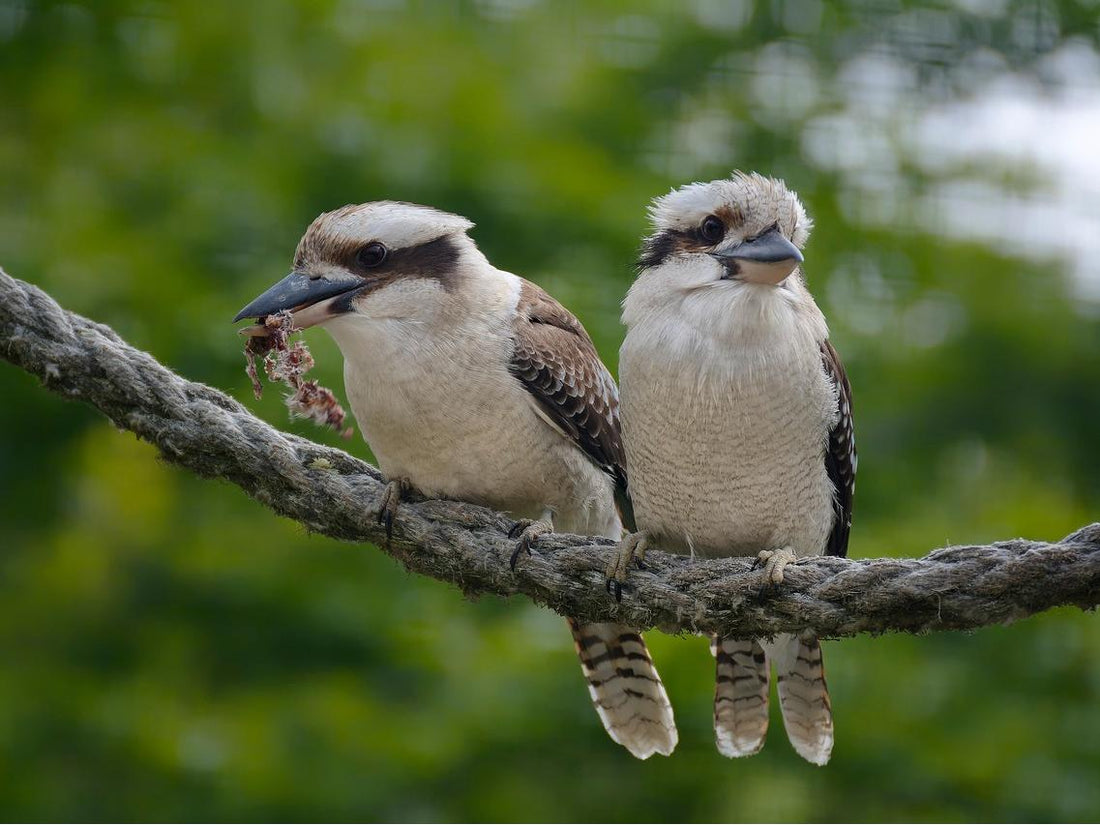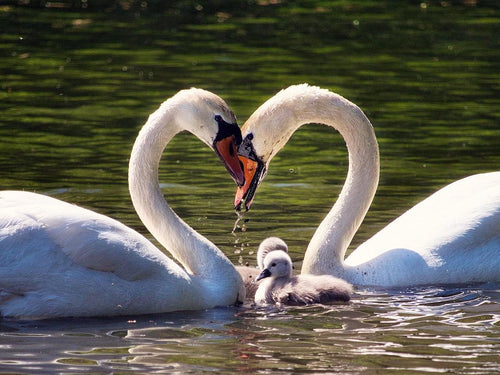How Do Birds Mate? The Surprising Truth About Bird Courtship and Reproduction
TTNatureTeam
Every spring, birds fly up in the air and spend hours to months looking for a mate. We've all seen it. Birds dance bizarrely while also flapping their vibrant wings as widely as they can for potential mates to see. They also sing at the top of their lungs in complicated songs meant to attract other birds.
They are hard to miss with their showy and flashy moves. But what happens after the initial courtship? Have you ever really asked yourself - How do birds mate?
In this article, we'll be answering this question, among others. The answer isn't as simple as you'd think.
How Do Birds Mate?
To understand how birds mate, you have to throw out any preconceived ideas you have of mating and body parts. Most birds, about 97% of them, don't have penises like males.
Instead, the majority of birds (both male and female) have a cloaca, something they inherited from their reptilian ancestors. This is an opening that handles both waste and reproduction matters.
The cloaca connects to the reproductive organs. For male birds, this opening connects to their testes, while for females, it connects to their ovaries. The cloaca is found just below the tail.

The Act of Mating/The Cloacal Kiss
The act of mating, also called the cloacal kiss, between birds with cloacae is short. It's nowhere near as long or as brutal as mammals like dolphins.
Instead, when birds mate, the male gets on top of the female's back. The female’s wings are pushed back to have easier access to their opening. They press their openings together for just a few fluttering seconds. This is just enough time for the male bird to deposit sperm. Birds though, don’t just stop at one. Instead, they frequently give cloacal kisses to increase the chances of sperm fertilizing the egg.
Do All Birds Mate with a Cloacal Kiss?
Although the majority of birds have cloacae, this doesn't include ducks, geese, and other large birds like emus and swans. The remaining 3% of birds still have a cloaca, but they also possess a phallus, which they use during mating. Technically, the phallus remains inside the cloaca when not in use.
Ducks are not like smaller birds. They are aggressive, which is notable during mating season. Their anatomy is also wildly different. For instance, ducks have corkscrew-shaped penises used during mating. This phallus, however, is not used to pee.
Female ducks have an even more interesting part. They have choices when it comes to receiving and rejecting sperm through a spiral-shaped reproductive tract that spirals opposite of the male duck's penis. This was likely developed as a protective trait, as male ducks are aggressive and known to overmate female ducks.

How Long Does It Take for Birds To Start Laying Eggs?
The time it takes an egg to fertilize depends on the bird species. Some birds only take about 1 to 2 days before they are ready to lay an egg, while others don't lay their eggs for months.
For instance, bald eagles take about 5 to 10 days to lay eggs after fertilization. This is why birds spend so much time and energy building their nests before they mate.
How Do Birds Incubate Their Eggs?
Once a bird has laid their eggs, they can't just leave it alone. Instead, they incubate the eggs by sitting on them for hours. But do both male and female birds partake in this activity? How long can eggs be left alone?
This answer is one you're probably getting used to but, it entirely depends on the species. However, most of the time, both male and female birds take turns incubating the egg.
Many species even swap every other hour, like double-crested Cormorants. This isn't every bird species, though. Woodpeckers are known to take turns throughout the day, but male woodpeckers sit on the eggs at night.
What about bird species that don't incubate together? Male hummingbirds don't incubate the eggs. Instead, they are tasked with feeding the female hummingbird and protecting the nest at a distance.

Do Birds Stay Together After Mating?
So, what happens when birds are done mating? Do they just go on their merry way or are they now joined for life? The answer is a bit complicated. While birds are known for their monogamous lifestyles, not all mate for life.
Some bird species mate for life and will help build nests and protect their eggs and young, while others leave and only return to their partners during the new breeding season.
Although most bird species are monogamous, this doesn't mean they mate for life. It's common for birds to seek other partners during the next breeding season.
Which Birds Mate for Life?
Not all birds leave after doing the deed. Actually, many bird species aren't just monogamous, but they mate for life. Although these birds mate for life, they may seek new mates if their other half passes.
Ready to learn about true love birds? Keep reading for a few examples of birds that stay together forever.
Bald Eagles
Bald eagles are one of the few species that mate for life. They commonly choose the same partner each breeding season and even reuse the same nests. These large birds only lay about 1 to 3 eggs at a time. Their courtship is also stunning to see, as they lock talons and spin in the air while falling down. Before they hit the ground, they separate. Dramatic but beautiful.
Mute Swans
Mute swans have higher luck with their eggs and young. Not only do they mate for life, but they also have larger clutches of up to 7 eggs. Interestingly, mute swans are known to divorce and find new mates quickly. Still, this is rare even in mute swans that failed to breed.
Atlantic Puffins
Did you know Atlantic puffins also mate for life? These silly-looking birds are true lovers. After they get together, they stay together, even past breeding season. Generally, they lay one egg a season, and both parents take turns caring for it.
Canada Goose
Another deeply monogamous bird is the Canada goose. Canadian geese have very low divorce rates and are known to mate for life. They are affectionate with their partners and lay anywhere from 2 to 8 eggs. The incubation period lasts a little less than a month.
Black Vultures
Last but not least is the black vulture. Don't let their touch outward appearance fool you. Black vultures have big hearts and mate for life. They stick together through thick and thin, laying eggs in the ground instead of nests. The average clutch size of a black vulture is 2. Black vultures aren't just together for breeding, either. Instead, they spend most of their life together, outside of breeding season. This love is what we all should strive for.
Conclusion
All in all, birds mate in just a matter of seconds and with parts that resemble a reptile, as opposed to a mammal. Although the action is done quickly, male and female birds often stay together together to care for the eggs and their young. Some of these birds even mate for life. Talk about romance!

